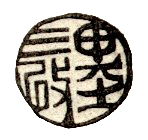The Geisha's Gender Play
Below is a timeline covering significant events in the Tokugawa period, both pertaining to the development of cross-dressing practices and to broader socio-political events.
powered by Advanced iFrame

The discourse on early modern Japanese crossdressing and the art depicting its practitioners have been dominated by the figure of the onnagata, the male performers that specialized in playing female roles in Kabuki theater. This phenomenon symbolizes the “decadent” urban culture of the Edo period (1603-1867.) The reality of early modern Japan is that gender play went both ways. While not as codified and reproducible as the Kabuki onnagata, female-to-male cross-dressing did exist. Alongside the onnagata in the theater district were the women of the red-light district who partook in their tradition of cross-dressing. I contend that Ukiyo-e is the best and most robust record of this tradition, is rarely discussed in literary sources of the times, and does not have the benefit of being immortalized in staged plays like the onnagata. These prints held so much power as a record of this tradition that they would be the subject of censorship when women’s gender play threatened the governmental order. I reconstruct the history from the prints that still exist and explore how these objects function to construct the persona of the cross-dressed woman for her audiences.
This backdrop of push and pull reveals that the cross-dressed woman’s image sat precariously on the border between submission and subversion. This chapter explores the evolving meaning of the cross-dressed woman’s image in the nineteenth century, covering the last decades of the long Edo period and crossing the major political shift of the Meiji restoration and the start of modern Japan. This evolution of meaning can be broken down into three stages: spectacle, archetype, and icon. Within an overall development, these stages overlap and generate a subtle, cumulative effect that turns the image of the cross-dressed woman into a representation of a complex web of social mores, political upheavals, and aesthetic shifts. This study will pick apart this web and identify the visual anatomy of their cross-dressing, distinguishing between the aspects of that anatomy that could be tolerated by the tastes and boundaries of the time and those which were transgressive and ultimately led to the suppression of the visual material by the patriarchal government. To accomplish this, the chapter examines the state of the Ukiyo-e publishing industry, its relationship to the entertainment world, its rapidly changing audience, and finally, the government regulation that sought to bring its subversive tendencies into line.
